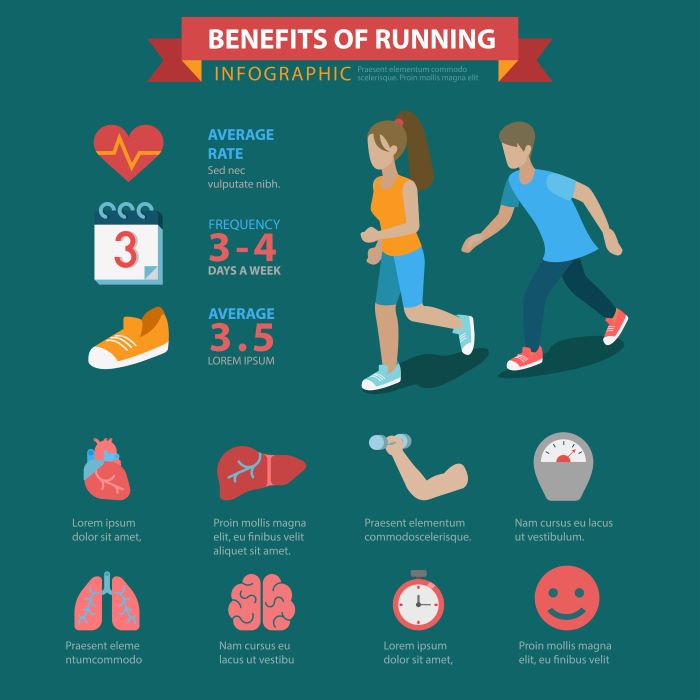Maintaining fitness during injury is not just about keeping up appearances; it’s crucial for both physical and mental well-being. When faced with an injury, many runners experience feelings of frustration and helplessness. However, understanding the importance of maintaining fitness can provide a pathway to recovery and resilience.
Physical Benefits: Engaging in alternative workouts, such as swimming or cycling, can help keep your cardiovascular fitness intact while minimizing stress on the injured area. This approach not only aids in maintaining endurance but also helps in preserving muscle mass, which can be lost during periods of inactivity. Here are some effective strategies:
- Low-impact exercises: Activities like aqua jogging or elliptical training can provide a good workout without risking further injury.
- Strength training: Focusing on upper body and core strength can keep you strong overall.
- Flexibility and mobility work: Gentle stretching and mobility exercises can aid in recovery and maintain range of motion.
Mental Resilience: Staying active can also help combat feelings of depression and anxiety that often accompany injuries. Engaging with a supportive community, like the one at Run Just For Fun, can motivate you to stay on track and embrace alternative workouts.
By focusing on maintaining fitness during recovery, you not only prepare your body for a return to running but also cultivate a positive mindset. Visit our website to learn more and get started today! Click here.
Alternative Workouts to Consider During Injury
When dealing with an injury, it’s essential to pivot your workout routine to include alternative exercises that keep you active while allowing your body to heal. This not only helps maintain cardiovascular fitness but also fosters a sense of accomplishment and motivation. Here are some effective alternative workouts to consider during your recovery:
- Swimming: The buoyancy of water provides a low-impact environment, making swimming an excellent choice for maintaining fitness without stressing your injury. It engages multiple muscle groups and promotes cardiovascular health.
- Cycling: Whether on a stationary bike or outdoors, cycling can elevate your heart rate and strengthen your legs while being gentle on your joints. Adjust the intensity to your comfort level to avoid aggravating your injury.
- Aqua Jogging: This technique allows you to mimic running while submerged in water. Using a flotation belt, you can maintain your running form and endurance without the impact.
- Yoga or Pilates: These practices focus on flexibility, strength, and balance, which can aid in your recovery process. They also promote mental wellness through mindfulness and relaxation techniques.
- Strength Training: Targeting non-injured areas or modifying exercises to avoid strain can help maintain muscle strength. Focus on upper body workouts or core stability exercises.
By incorporating these alternative workouts into your routine, you can stay active and engaged in your fitness journey, ensuring a smoother transition back to running once you’re healed. Remember to consult with a healthcare professional or a physical therapist to tailor these suggestions to your specific injury and needs.
Incorporating Cross-Training into Your Routine

Cross-training is a powerful strategy that can enhance your overall fitness while allowing you to recover from an injury. By diversifying your workout routine, you engage different muscle groups, reduce the risk of overuse injuries, and maintain your cardiovascular fitness. Here’s how to effectively incorporate cross-training into your routine:
- Choose Complementary Activities: Select exercises that are low-impact and can help you maintain your aerobic capacity without stressing the injured area. Options like swimming, cycling, or elliptical training can be excellent choices.
- Set a Schedule: Incorporate cross-training sessions into your weekly routine to create a balanced fitness plan. For instance, you might reserve 2-3 days a week for cross-training, interspersed with your rehabilitation exercises.
- Focus on Strength Training: Integrate strength workouts that target areas not affected by your injury. This could include upper body exercises or core strengthening routines, ensuring that your overall muscle tone remains intact.
- Monitor Intensity: While engaging in cross-training, pay attention to your body’s signals. Adjust the intensity and duration of your workouts based on how your body feels, especially in relation to your injury.
- Stay Consistent: Consistency is key in maintaining fitness levels. Stick to your cross-training schedule, and gradually increase the intensity as your recovery progresses.
By embracing cross-training, you not only keep your fitness levels up but also enhance your running performance once you’re back on your feet. This holistic approach ensures that you stay engaged with your fitness journey, even during recovery.
Nutrition Tips for Injury Recovery and Fitness

Nutrition plays a crucial role in both recovery from injury and maintaining your fitness levels. A well-balanced diet can aid healing, reduce inflammation, and support your body’s overall performance. Here are some essential nutrition tips to consider during your recovery:
- Prioritize Protein: Consuming adequate protein is vital for muscle repair and recovery. Aim to include lean sources such as chicken, fish, eggs, legumes, and dairy in your meals to promote healing.
- Incorporate Anti-Inflammatory Foods: Foods rich in omega-3 fatty acids, such as salmon, walnuts, and chia seeds, can help combat inflammation. Additionally, fruits and vegetables high in antioxidants, like berries and spinach, can support your immune system and accelerate recovery.
- Stay Hydrated: Proper hydration is essential for overall health and can also aid in recovery. Make sure to drink enough fluids throughout the day, especially if you are engaging in cross-training activities.
- Balance Your Carbohydrates: While it’s important to maintain energy levels, focus on consuming complex carbohydrates, such as whole grains and starchy vegetables. These will provide sustained energy without causing spikes in blood sugar.
- Consider Supplements Wisely: If your diet lacks certain nutrients, consider supplements like vitamin D, calcium, or magnesium, which are important for bone health and muscle function. However, consult with a healthcare professional before adding any new supplements.
By focusing on these nutrition tips, you can support your body’s healing process while also maintaining your fitness levels. A well-rounded diet not only aids in recovery but also prepares you for a successful return to your running routine.
Mental Strategies to Stay Motivated While Injured

Injuries can be mentally challenging for runners, often leading to feelings of frustration and a loss of motivation. However, maintaining a positive mindset is crucial for both recovery and long-term fitness. Here are several effective mental strategies to help you stay motivated during your injury:
- Set Realistic Goals: Instead of focusing solely on running, set achievable goals related to your recovery process. These could include completing a specific rehabilitation exercise or maintaining a consistent cross-training routine. Celebrate small victories to keep your spirits high.
- Visualize Success: Visualization is a powerful tool athletes use to enhance performance. Spend time imagining yourself running pain-free and achieving your goals. This mental imagery can reinforce your determination and keep you focused on positive outcomes.
- Stay Connected: Engage with your running community, whether through social media or local groups. Sharing your experiences with others who understand your situation can provide emotional support and help keep your motivation levels up.
- Practice Mindfulness: Incorporate mindfulness techniques such as meditation or yoga into your daily routine. These practices can help reduce anxiety, improve your mood, and foster a sense of control over your recovery journey.
- Educate Yourself: Learn more about your injury and the recovery process. Understanding what your body needs can empower you and make the recovery feel less daunting. Knowledge can be a great motivator!
By implementing these mental strategies, you can navigate the emotional ups and downs of injury recovery while maintaining a strong focus on your fitness journey. Staying motivated is key to overcoming challenges and returning to the trails stronger than before.
When to Consult a Professional for Injury Guidance

While self-management strategies can be effective for minor injuries, knowing when to consult a professional is crucial for a safe and efficient recovery. Here are some indicators that it’s time to seek professional guidance:
- Persistent Pain: If you experience ongoing pain that doesn’t improve with rest, ice, or over-the-counter medication, it’s essential to consult a healthcare provider. Ignoring persistent pain can lead to more severe injuries.
- Swelling and Bruising: If swelling or bruising appears and does not subside after a few days, a professional evaluation is necessary. This could indicate a more serious injury that requires specialized treatment.
- Loss of Function: Difficulty performing daily activities or diminished range of motion can signal the need for expert advice. A professional can help you understand the extent of the injury and the best way to rehabilitate.
- Recurring Injuries: If you find yourself frequently sidelined by similar injuries, it may be time to consult a physical therapist or sports medicine specialist. They can provide tailored advice and prevent future occurrences.
- Questions about Recovery: If you’re unsure about the right course of action for your injury or how to maintain fitness during recovery, seeking professional guidance can clarify your path forward.
Don’t hesitate to reach out to a healthcare professional if you’re experiencing any of these issues. Consulting an expert can significantly enhance your recovery process and help you return to running safely. Visit our website to learn more and get started today! Click here.


